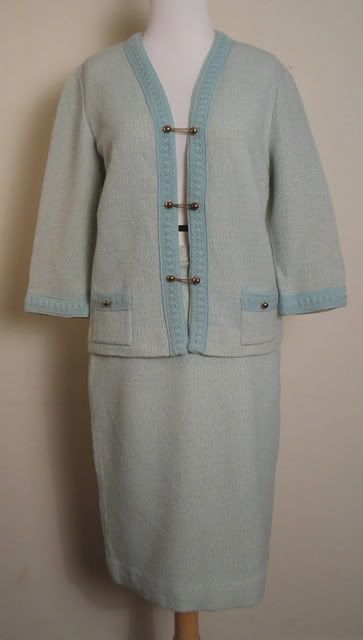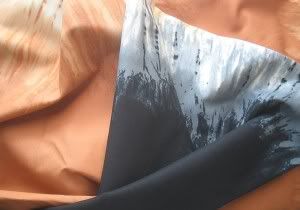Heffy's Collections specializes in vintage clothing from the 20th century, primarily from the second half, at least the part of it that is "vintage". We have a fair amount from the '60's, 70's and '80's, with an occasional item from earlier. All of the items are ready-to-wear. That doesn't stop us from being interested in the finer things, or from looking at the special one of a kind items haute couture offers.
The term haute couture originated in France in the mid 1800's. It connotes clothing especially made for an individual. The clothing is designed and fitted to the person and is made of the finest fabrics available. Usually several fittings are required and the pieces are hand tailored by experts. The fabrics are so expensive, the first mock-ups are often done from muslin or similar fabrics. France has requirements for a design house to use the term haute couture and to be classified as such. Over time, many of the designers have survived with their ready-to-wear lines, but they continue the tradition of haute couture as a minor portion of their trade. I'm sure there are many of you who enjoy watching the awards shows to see the celebrities and what they are wearing. Sometimes the clothing is much more intriguing than the people wearing it!
There have been many designers over the years, so this will highlight just a few. Perhaps at a later time, others will be added. Coco (Gabrielle) Chanel was one of the most influential designers of the 20th century. She opened her first shop in 1913 in Paris. Many women worked in factories during the war, and Coco designed simple, "manly" clothes for women. Later, she designed her trademark Chanel suit with its boxy jacket and slim straight skirt. After a hiatus, she brought back the Chanel suit in the '50's and regained her status as a leading designer. She is credited as the originator of the little black dress, the Chanel jacket, and bell bottoms. That's quite a range! The House of Chanel still operates in Paris with Karl Lagerfeld. Heffy's Collections has a suit similar to the Chanel style:
 Butte Knit suit
Butte Knit suitChristian Dior is another fashion designer whom I believe was very influential. See the blog
"Fifties Fashions" for information on him. His "New Look" revolutionized '50's fashion.
Lucien Lelong designed his first collection in 1903. He served as President of the
Chambre Syndicale de la Couture, the organization in France that determines the designers of haute couture. In 1926, he employed 1200 workers, which seems like a lot to me. He is credited with bargaining with the Nazis, saving Parisian couture and preventing 12,000 couture employees from being deported to Germany. During his lifetime, Christian Dior, Pierre Balmain, and Hubert de Givenchy all worked at Lelong.
There are so many more designers with so many contributions. Chanel first used jersey as her fabric, which was novel at the time. It's wonderful drape kept it in her reportoire. Balenciaga brought us the "baby doll" dress. The list goes on and on. Hopefully, I will be able to shed just a bit of insight into other designers in later blogs. Until then, I'll keep hoping Heffy finds some designer clothes we can feature here!
 purple butterflies on black
purple butterflies on black tie dye
tie dye unique stripes with flowers
unique stripes with flowers Becky in a pair of bell bottoms by Heffy's Collections
Becky in a pair of bell bottoms by Heffy's Collections purple butterflies on black
purple butterflies on black tie dye
tie dye unique stripes with flowers
unique stripes with flowers Becky in a pair of bell bottoms by Heffy's Collections
Becky in a pair of bell bottoms by Heffy's Collections Butte Knit suit
Butte Knit suit